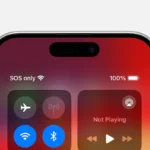Apple Music Replay tracks what you listen to all year and shows your top songs, artists, and albums. It’s a fun way to see your music habits over time. Your 2025 Apple Music Replay mix is now available and updates weekly with your most-streamed songs throughout the year.
You can find your Replay playlist in several ways. On iPhone with iOS 18.1 or later, you can access it directly from the Home, New, and Search tabs in the Music app. For other devices, visit the Apple Music Replay website where you’ll find your personalized stats and playlists.
Looking at your Replay mix is like getting a musical snapshot of your year so far. The playlist shows what you’ve been loving since January, and you can watch how your tastes change as 2025 continues. To use this feature, make sure your listening history is turned on in your Apple Music settings.
What Is Apple Music Replay?
- Personalized stats: See your top songs, artists, albums, and genres.
- Replay playlists: A curated playlist of your top 100 tracks for the year.
- Replay All-Time: A running playlist of your most-played songs across your entire Apple Music history (introduced in 2025).
- Weekly updates: Your Replay playlist refreshes every Sunday, so it grows with your listening habits throughout the year.
(source: Apple Support, TechUpside)
📲 How to Access Apple Music Replay 2025
On iPhone or iPad
- Open the Apple Music app.
- Go to the Listen Now tab.
- Scroll down to find Replay: Your Top Songs by Year.
- Tap your Replay 2025 playlist to start listening.
On the Web
- Visit music.apple.com/replay.
- Sign in with your Apple ID.
- View your stats dashboard (top artists, songs, albums, and minutes listened).
🎶 What’s New in 2025
- Replay All-Time Playlist: Lets you look back at your top tracks from the past decade.
- Improved sharing: Share your Replay stats directly to Instagram Stories, TikTok, or Messages.
- Monthly listening insights: Apple now gives mini-reports each month so you don’t have to wait until December.
🛠 Troubleshooting
- Not seeing Replay 2025? You need to listen to enough music for Apple to generate stats (usually a few hours of playback).
- Playlist missing? Make sure you’re signed in with the same Apple ID linked to your Apple Music subscription.
- Stats not updating? Replay refreshes weekly, not instantly. Check back on Sundays.
📌 Bottom Line
Apple Music Replay 2025 is a fun way to track your listening habits, discover your personal soundtrack of the year, and share it with friends. With the addition of Replay All-Time and monthly insights, Apple Music is making it easier than ever to celebrate your music journey.
Key Takeaways
- Apple Music Replay 2025 is available now and updates weekly with your most-played songs.
- Access Replay through the Apple Music app or the dedicated website for a complete view of your listening stats.
- Your personalized Replay mix requires listening history to be enabled in your Apple Music settings.
Overview of Apple Music Replay
Apple Music Replay is a feature that shows users their music listening habits throughout the year. It tracks what you’ve been playing and creates personalized stats about your music choices.
The feature compiles your top songs, artists, albums, and genres based on how much you listen to them. You can check these stats any time during the year, not just at year’s end.
Your personalized Replay mix gets updated weekly. This playlist contains the songs you’ve played most often, letting you enjoy your favorites in one convenient place.
Apple Music tracks your listening history by minutes spent on each track. The more you listen to a song, the higher it ranks in your personal charts.
The stats show your top artists ranked by how much time you’ve spent with their music. You’ll see which musicians have captured most of your attention throughout the year.
Your top albums appear based on how often you play tracks from them. Apple calculates album plays by adding up time spent on individual songs from that collection.
The feature also identifies your top genres, helping you understand your music preferences. This can be eye-opening for people who think they only like certain styles.
Unlike some competing services, Apple Music Replay provides access to these insights year-round. You can track how your music taste evolves as 2025 progresses.
Accessing Apple Music Replay
Apple Music Replay lets users see their top songs, artists, and albums for the year. There are multiple ways to check your listening stats, but you’ll need an active subscription and sometimes specific app versions.
Through the Apple Music App
The easiest way to access Apple Music Replay is directly through the Apple Music app on your device. For iPhone users with iOS 18.1 or later, you can find Replay right in the app. Look for it in the Home, New, or Search tabs.
To access your Replay:
- Open the Apple Music app
- Tap on the Search tab at the bottom
- Type “Replay” in the search bar
- Select the Replay banner from the results
If you can’t find Replay, try updating your app. Sometimes the feature disappears due to account issues. Some users fixed this by signing out of their Apple account in Settings > Media & Purchases, restarting their device, and signing back in.
Via Web Browser
If you prefer using a computer or don’t have the latest iOS version, you can access Apple Music Replay through a web browser. This method works on any device with internet access.
Steps to access Replay online:
- Visit replay.music.apple.com
- Sign in with your Apple ID
- View your personalized stats and playlists
The web version shows your top songs, artists, and albums that defined your year. You can explore your listening history and even listen to a personalized 2025 Apple Music Replay mix based on your favorites.
The browser version might offer some features not available in the app, such as more detailed listening statistics or sharing options.
Apple Music Subscription Requirements
To access Apple Music Replay, you must have an active Apple Music subscription. Free users cannot view their Replay stats.
Subscription options include:
- Individual plan
- Family plan
- Student plan
- Apple One bundle
Your listening data becomes available after you’ve listened to enough music with your subscription. New subscribers might need to wait until they’ve built up sufficient listening history before their Replay becomes available.
For the best experience, listen to music regularly through the Apple Music app. The more you listen, the more accurate your Replay stats will be. Apple Music tracks your listening habits throughout the year, updating your Replay periodically.
Comparison with Competitors
Music streaming services offer different ways to show users their listening habits. These personalized summaries help listeners track their music journey throughout the year and share their musical tastes with friends.
Apple Music Replay vs. Spotify Wrapped
Apple Music Replay and Spotify Wrapped both provide yearly music summaries, but they differ in several key ways. Spotify Wrapped tends to be more popular than Apple Music Replay, though Apple has been working to improve its year-in-review feature.
Spotify Wrapped offers a more social media-friendly experience. It creates shareable graphics and interactive stories that users can post on Instagram, Twitter, and other platforms. The presentation is colorful and engaging, with eye-catching designs that change yearly.
In contrast, Apple Music Replay provides a more straightforward approach. It shows users their top songs, artists, and albums in a clean interface. While it may lack some of Spotify’s flashy features, some users prefer its simplicity.
However, in 2024, Apple Music Replay made significant improvements. Some users now find it more comprehensive than Spotify’s offering, which some described as “barebones” compared to previous years.
Both services update their yearly recap features regularly, competing to give users the most engaging way to review their music listening habits.
Customization of Replay Playlist
Apple Music Replay offers more than just a look at your music stats. You can make your Replay playlist your own in several ways.
First, you can create multiple versions of your Replay playlist for different activities. Want one for workouts and another for relaxing? Just copy your main playlist and adjust it to fit each mood.
Users can also change how their Replay data looks when sharing. The Apple Replay template lets you edit the results before posting to social media.
Some music fans make their Replay experience more visual. They create custom artwork for their playlists that matches Apple’s style but adds personal touches.
Your listening habits shape your Replay, so skipping songs you don’t want counted can help keep your list true to your taste. This prevents your most-streamed songs list from showing tracks you don’t actually enjoy.
Artists can benefit from Replay too. Musicians can watch how fans interact with their music and use this feedback to understand what songs connect most with listeners.
The best part? Your Replay updates regularly throughout the year. This lets you track changes in your music taste over time and adjust your custom playlists to match your current favorites.
Analysis of Listening Trends
Apple Music Replay offers valuable insights into how we consume music and what our preferences reveal about our musical tastes over time. These data points show patterns that connect our personal choices to broader trends.
Personal Listening Habits
Apple Music Replay gives users a detailed breakdown of their listening patterns throughout the year. The feature tracks total listening hours, favorite artists, and most-played songs. This data helps listeners understand their own music preferences better.
Users can see which genres dominate their playlists. Some might discover they listen to more indie rock in winter or switch to pop during summer months. These insights can be surprising!
The detailed stats show not just what you play most, but how your tastes change over time. Many listeners find their top songs shift each season based on mood or current events.
Time-based patterns also emerge. Morning commutes might feature podcasts or upbeat tracks, while evening listening leans toward calmer tunes. These habits create a musical fingerprint unique to each listener.
Global Music Trends
Apple Music’s collective data reveals broader patterns across its subscriber base. Popular genres rise and fall throughout the year, often tied to major releases or cultural events.
The platform can identify emerging artists gaining traction before they hit mainstream success. Regional differences are notable too – what’s popular in Asia might differ significantly from European or American trends.
Seasonal shifts affect everyone. Holiday music spikes in December, while summer months see increased streaming of upbeat tracks. These patterns help artists plan releases for maximum impact.
Genre crossover is increasingly common. Listeners who primarily enjoy hip-hop might show surprising interest in country or electronic music. This data helps Apple Music create better recommendations.
Unlike competitor platforms, Apple’s approach focuses on year-round tracking rather than end-of-year summaries only. This provides a more complete picture of how global music consumption evolves.
Integration with Social Media
Sharing your Apple Music Replay with friends has become easier in recent years. Many users want to show off their listening habits on their favorite social platforms.
To share your Apple Music Replay, you can visit Replay.music.Apple.com in Safari. This web version offers stats that aren’t available in the app itself.
Sharing Options Include:
- Screenshot and post directly
- Use the built-in share function
- Create custom graphics with your data
The process for sharing is simple. Open your Replay playlist, tap the three dots menu, and select “Share Playlist” to choose your preferred social media platform.
Some users find the sharing features limited compared to Spotify Wrapped. There’s no easy way to share all Replay data directly through the app.
Many Apple Music fans create their own custom designs for sharing. This adds a personal touch that stands out on Instagram or Twitter feeds.
The social features make business sense for Apple. Music streaming becomes more fun when friends can compare their top artists and songs.
For better results when posting, try these tips:
- Add your own caption about your music taste
- Tag artists you discovered this year
- Use music-related hashtags to reach more people
Your Apple Music Replay can spark conversations about music with friends and followers across social platforms.
Technical Aspects of Apple Music Replay
Apple Music Replay’s technical features focus on how the service tracks, presents, and allows for the export of your music data. The platform offers various quality settings for listeners and methods to save favorite tracks for offline enjoyment.
Audio Quality Options
Apple Music Replay works with different audio quality settings available in the main Apple Music service. Users can choose between standard, high, and lossless audio quality options when streaming their Replay playlists.
The quality settings directly affect how your music sounds. Standard quality uses less data but offers lower fidelity. High quality provides better sound with moderate data usage.
For audiophiles, Apple Music’s lossless option delivers CD-quality sound with no compression loss. This setting requires more bandwidth and storage space when streaming or downloading.
Users can change these settings in the Apple Music app under Settings > Music > Audio Quality. Your selected quality applies when listening to your personalized Replay playlists.
Converting Replay Playlist to MP3
While Apple Music doesn’t officially support downloading Replay playlists as MP3 files, users have found workarounds using third-party tools. An Apple Music Converter can transform streamed songs into MP3 format.
These converter tools capture audio during playback and save it in MP3 format. This makes the music compatible with any MP3 player or device that doesn’t support Apple Music.
The conversion process typically involves:
- Opening the Replay playlist in Apple Music
- Selecting songs to convert
- Choosing MP3 as the output format
- Setting quality parameters
- Starting the conversion process
Converting to MP3 generally results in some quality loss compared to Apple’s streaming formats. Higher bitrate settings (like 320kbps) minimize this quality reduction.
Remember that Apple’s terms of service may restrict converting subscription content to MP3 format for certain uses.
Prominent Artists and Albums
Apple Music Replay highlights the most popular musicians and albums that have shaped listeners’ year. Users can see which artists dominated their personal charts and which albums got the most playtime in their music library.
Taylor Swift’s Impact
Taylor Swift continues to dominate Apple Music Replay charts in 2025. Her album releases consistently rank among top streams for millions of users worldwide.
Swift’s “Cruel Summer” remains a fan favorite, often appearing in many users’ top songs list despite being released years ago. This staying power shows her music’s longevity on streaming platforms.
Many users report Taylor appearing in their top artists even when they haven’t directly searched for her music. This happens because she frequently collaborates with other musicians or gets credited on songs.
Swift’s catalog performs exceptionally well during seasonal changes. Listeners often return to her older albums during fall months, creating noticeable spikes in her Apple Music Replay rankings.
Kendrick Lamar’s Discography
Kendrick Lamar‘s music continues to make a strong showing in many users’ Apple Music Replay stats. His thoughtful lyrics and complex themes keep listeners returning to his catalog.
His albums often appear in top albums lists years after their release dates. This staying power demonstrates the lasting impact of his work on the streaming platform.
Lamar’s discography shows interesting listening patterns across different demographics. Younger listeners tend to discover his newer works first, while long-time fans regularly revisit his earlier albums.
Some Apple Music users note that Kendrick sometimes appears in their Replay stats through features on other artists’ tracks. His guest verses on popular songs contribute significantly to his streaming numbers.
Emerging Artists Spotlight
Benson Boone has climbed rapidly in many users’ Apple Music Replay rankings for 2025. His breakthrough singles have connected with listeners across multiple demographics.
Sabrina Carpenter has also seen tremendous growth in her streaming numbers. Her catchy pop songs frequently appear in users’ top played lists, especially among younger listeners.
Billie Eilish maintains her strong position in many Replay charts. Her evolving sound continues to attract both new fans and retain loyal listeners who have followed her career from the beginning.
What’s interesting about these emerging artists is how quickly they can rise in personal Replay stats. A single viral hit can propel a relatively unknown musician into someone’s top five artists within weeks.
Apple Music’s algorithm captures these rapid changes in listening habits. The platform shows users how their music tastes evolve when new artists break through their established listening patterns.
User Feedback and Future Features
Apple Music Replay has evolved based on what users want. Apple Music often incorporates user feedback into their updates, making the tool better over time.
Many subscribers have asked for more detailed stats about their listening habits. They want to see monthly breakdowns instead of just yearly ones.
Top Requested Features:
- Real-time stat updates (not just end-of-year)
- Sharing options for social media
- Playlist creation based on past favorites
- More in-depth artist analytics
Apple Music subscribers can submit ideas through the Apple Support app or website. This direct line to Apple helps shape future versions of Replay.
Some users have compared Replay to Spotify Wrapped and want similar features. The competition between music platforms has pushed Apple to keep improving their offering.
The Replay experience aims to give users insights into their music tastes. People enjoy seeing which tracks they’ve listened to most and how their preferences change.
Apple tests new features with select users before wide release. This helps catch bugs and refine the experience based on real-world use.
Looking ahead, Apple may add more interactive elements to Replay. Features like music quizzes or personalized radio stations based on your top tracks could be coming soon.
Frequently Asked Questions
Apple Music Replay offers insights into your listening habits. Here are answers to common questions about accessing and troubleshooting this feature.
How can I view my Apple Music stats for this year?
You can view your Apple Music stats for 2025 by visiting the Apple Music Replay website. Simply log in with your Apple ID to see your top songs, artists, and albums.
Make sure you have enabled listening history in your Apple Music settings. This tracking feature needs to be turned on to collect your data.
What should I do if I cannot access my Apple Music Replay?
Check that you have enabled listening history in your settings. On Mac, open the Apple Music app, go to Music > Settings, click the General tab, and select Use Listening History.
Also verify you’ve listened to enough music. Apple requires a minimum amount of listening time before creating your Replay stats.
Clear your browser cache or try a different browser if the Replay site isn’t loading properly.
Is it possible to see my most played songs by month on Apple Music?
Currently, Apple Music Replay doesn’t offer a monthly breakdown of your listening habits. The feature primarily focuses on yearly statistics.
The standard Replay experience shows your top songs, artists, and albums for the entire year rather than dividing them by month.
Why is my Apple Music Replay not updating or working properly?
Replay may not update immediately after listening to music. Apple typically refreshes the data weekly, not in real-time.
Check that listening history is enabled in your Apple Music settings. Without this feature turned on, your plays won’t be counted.
If you’re using multiple devices, make sure listening history is enabled on all of them to capture your complete listening data.
Can I see my Apple Music listening history from previous years?
Yes, Apple Music allows you to access Replay playlists from previous years. When you visit the Replay website, you can view stats from past years.
Previous years’ Replay playlists are typically available in your Apple Music library if you’ve accessed them before.
How do I log in to view my personalized Apple Music Replay playlist?
Visit the official Apple Music Replay website using a web browser. Click the “Get Started” or “Sign In” button.
Enter your Apple ID and password when prompted. This is the same account you use for your Apple Music subscription.
After signing in, you’ll see your personalized Replay stats and can add the playlist to your library for easy access.







